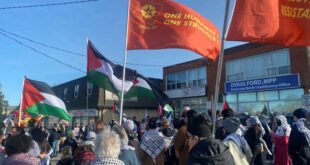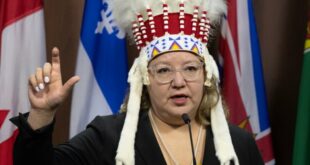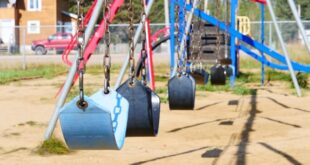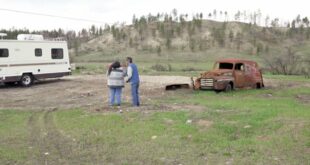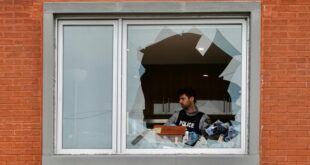Premier Doug Ford is allowing a 'tsunami' of rural development the city never planned for, one councillor says

Two Hamilton developers who successfully influenced the Ford government to remove their land from the Greenbelt simultaneously benefited from a provincial order to expand the city's urban boundary.
The same day in 2022 the province announced its plans to remove three Hamilton sites from the Greenbelt, it also opened up an additional 2,200 hectares of local countryside for development.
The move came one year after Hamilton council voted not to expand its boundary and has since prompted one councillor to say Premier Doug Ford is allowing a "tsunami" of development on rural land, instead of the "small" waves the city once envisioned.
The provincially mandated expansion includes a peninsula of land bordered by Airport Road and White Church Road to the north and south, and Miles Road and Upper James Street to the east and west. It's surrounded by countryside where housing development is limited because of noise from the nearby airport.
A CBC Hamilton analysis of more than a dozen property records in the area found Sergio Manchia of UrbanCore Developments has owned a parcel of the Airport-White Church land since 2021, along with developer Frank Spallacci. They weren't able to build housing there until the province expanded the urban boundary on Friday, Nov. 4, 2022.
The following Monday, Manchia and Spallacci moved ahead with the purchase of a second property, according to real estate records. They closed on that property as well as a third in early 2023. The date they began negotiations for the third property was not available.
Manchia and Spallacci now own a total of 63 hectares of developable land just east of the Hamilton airport.
Paul Paletta, CEO of Alinea, formerly Penta Properties, also owns a property on White Church Road that the province added to Hamilton's urban boundary.
Directly across the street, he owns another parcel of land the province recently removed from the Greenbelt, unlocking a combined 40 hectares. Both properties have been in his family since the 1970s but are only now both open for development.
The province also removed Manchia's property at Barton Street and Fifty Road in Hamilton's east end from the Greenbelt.
Manchia, Spallacci and Paletta did not respond to requests for comment.
'Careful consideration' given to boundary change: province
Both Paletta and Manchia were named in a scathing integrity commissioner's investigation into how the province decided to remove land from the Greenbelt.
The commissioner found that throughout the fall of 2022, developers and their representatives, including those advocating for Paletta and Manchia, had been in talks with ministry of housing staff about land they wanted to be opened for development and were successful in influencing the Greenbelt land removal process.
Ministry of Housing spokesperson Conrad Spezowka told CBC Hamilton that in the case of Hamilton's urban boundary expansion, the province made its decision after "careful consideration."
"The minister took the necessary action to accommodate this growth and allow for more desperately needed housing to be built," he said.
He did not answer questions about whether the province consulted or engaged with developers when selecting the sites.
Land not included in city staff's previous recommendations
The provincially ordered urban boundary expansion does align with for the most part with what Hamilton's own planning staff had once pitched to accommodate expected population growth. That plan was later rejected by council, in November 2021, in favour of holding Hamilton's urban boundary and building denser neighbourhoods.
However, in that initial pitch, city staff did not include the Airport-White Church land as an area that would need to be built up, according to staff reports.
The province also ordered urban expansions in other municipalities including Belleville and Ottawa, which a local councillor has requested the auditor general look into.
Hamilton Coun. Mark Tadeson (Ward 11) told CBC Hamilton the land-selection process should be investigated. He said developers do buy land speculatively, hoping to one day build on it, however in the case of the Airport-White Church land, "it was very profitable speculation."
"It seems to me like the game was fixed," Tadeson said on Monday.
When Hamilton's council rejected staff's plan to expand its urban boundary in 2021, it chose to instead increase density within the city to meet its housing targets.
In the long-term, the city had envisioned eventually building outwards but in "small, progressive waves" over the next decades, Tadeson said.
"What the provincial government is doing is akin to a tsunami," he said.
ABOUT THE AUTHOR
Samantha Beattie is a reporter for CBC Hamilton. She has also worked for CBC Toronto and as a Senior Reporter at HuffPost Canada. Before that, she dived into local politics as a Toronto Star reporter covering city hall.
*****
Credit belongs to : www.cbc.ca
 MaharlikaNews | Canada Leading Online Filipino Newspaper Portal The No. 1 most engaged information website for Filipino – Canadian in Canada. MaharlikaNews.com received almost a quarter a million visitors in 2020.
MaharlikaNews | Canada Leading Online Filipino Newspaper Portal The No. 1 most engaged information website for Filipino – Canadian in Canada. MaharlikaNews.com received almost a quarter a million visitors in 2020.


